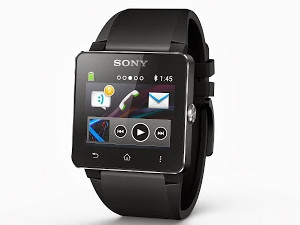
With 2013 rushing to a close, Juniper Research has published its predictions for the top tech trends for 2014. The trends range across an array of technologies and applications, many of which are underpinned by wireless connectivity. These are the trends around which researchers at Juniper believe will be significant activity - be that adoption or disruption - over the next 12 months:
1. Smart cities
The idea of connecting every physical object to the Internet is not new, but there has been ever-increasing activity within the industry over the past 12 months towards enabling a well-connected infrastructure via the evolution of efficient and intelligent systems. According to the report, as technology continues to enable a more economic and efficient living for the urban population next year, the need for municipal authorities to cut carbon footprints and reduce overall expenditure will provide additional pressures.
2. M-agri to build on m-payment success in developing markets
Over the past few years, the mobile handset has brought financial inclusivity to millions of unbanked individuals across sub-Saharan Africa and parts of developing Asia through the deployment of mobile wallets, says Juniper. "Increasingly, we are seeing an array of services - educational, informative and financial - designed to improve the productivity of farmers and, thereby, benefit the wider agricultural sectors on which many developing countries are heavily dependent." According to the report, 2014 will see a dramatic increase in the provision of micro-lending services, which can enable farmers to buy goods or machinery to improve productivity and/or, through micro insurance, to protect against poor harvests. These will be accompanied by an increasing use of voice and text-based services with the aim of providing critical information on crop management, product tracking, or enabling rural agricultural workers to collect and share data on farming techniques.
3. The watershed year for wearables
Juniper Research has identified 2014 as the watershed year for wearable devices, both in terms of rollouts and market traction. The entry of new players into the sector, together with both product launches and version upgrades by earlier entrants (Samsung, Sony, Apple and Google) provide an array of catalysts for substantial growth. The research firm expects that governments will seek to develop regulatory frameworks to legislate the use of wearables, both from a privacy and data protection perspective.
4. iPads and tablets to flourish in educational settings
Tablet computing is now an attractive offering for teachers and students alike, and Juniper believes the number of tablets used for educational settings will soar during 2014, both as complement to, and in place of, desktop PCs. "Tablets can provide content to engage students and enrich their education, and increasingly, students are already accustomed to using a tablet outside of school."
5. Mobile fitness devices to diversify into m-health arenas
Juniper Research believes the basic infrastructure supporting m-fitness is now fully developed, allowing companies to create increasingly-sophisticated, and useful m-fitness devices that link to smartphone and from there to a wide range of services. However, Juniper predicts fitness and sports device vendors will increasingly begin to explore the possibility of extending their portfolios to other areas of the m-fitness or m-health ecosystem that are adjacent to their current product offering. As consumer acceptance and adoption of m-fitness devices accelerates through 2014, this will have the knock-on effect of stimulating wider interest in m-health applications, says the report.
6. Global 4G LTE subscribers to double in 2014
With subscribers beginning to sign up for 4G-LTE services in large volumes this year, the global number of LTE users will double in 2014, predicts Juniper. While LTE networks are still in their infancy in many parts of the world, a number of operators have already begun to roll out 4G LTE-Advanced (LTE-A) networks, especially in developed markets. Juniper expects this trend to continue, along with the roll out of commercial services, driven by the embedding of technology in consumer devices. Juniper also expects the groundwork in terms of research and development towards 5G to continue in 2014, with a number of significant announcements predicted from key players about future plans and investments.
7. Context awareness in mobile computing to increase
Context awareness in mobile computing exploits information about users, their devices and the environment, to improve the interaction among them by recognising, harnessing and translating big data into actionable insights. While this is not in itself a new phenomenon, Juniper foresees there will be acceleration in applicability during 2014, in order to facilitate the next generation of smart wearables and other mobile devices.
8. Disruption in the home gaming market
A newer breed of home games devices, while not posing a threat to the core audience for the Xbox One or PS4, offers the potential to disrupt the market in 2014 by siphoning off high- and low-end users, says the report. An example is the Android-based Ouya microconsole that was funded through a Kickstarter campaign, which went on to raise 904% of the original goal.
9. The cloud becomes personal
While consumers are increasingly migrating their content from the device into cloud storage, concerns over the relative security of several popular solutions have in turn prompted increased activity within the personal cloud space, says Juniper. "An increasing array of players now offers network-attached storage (NAS) drives which plug into the home network via Gigabit Ethernet and which are available for a once-off payment, enabling consumers to store content on the NAS rather than having to access it via a third-party connection." Juniper envisages the trend towards the NAS will accelerate throughout 2014, with the retail cost of lower capacity drives continuing to fall and stimulating further demand.
10. 3D printer shipments to surge
While shipments of 3D printers are still at relatively low levels, Juniper expects them to increase significantly over the next 12 months as interest in their ever-widening scope of applicability surges, in large part driven by a wave of leading vendors into the space.
Share